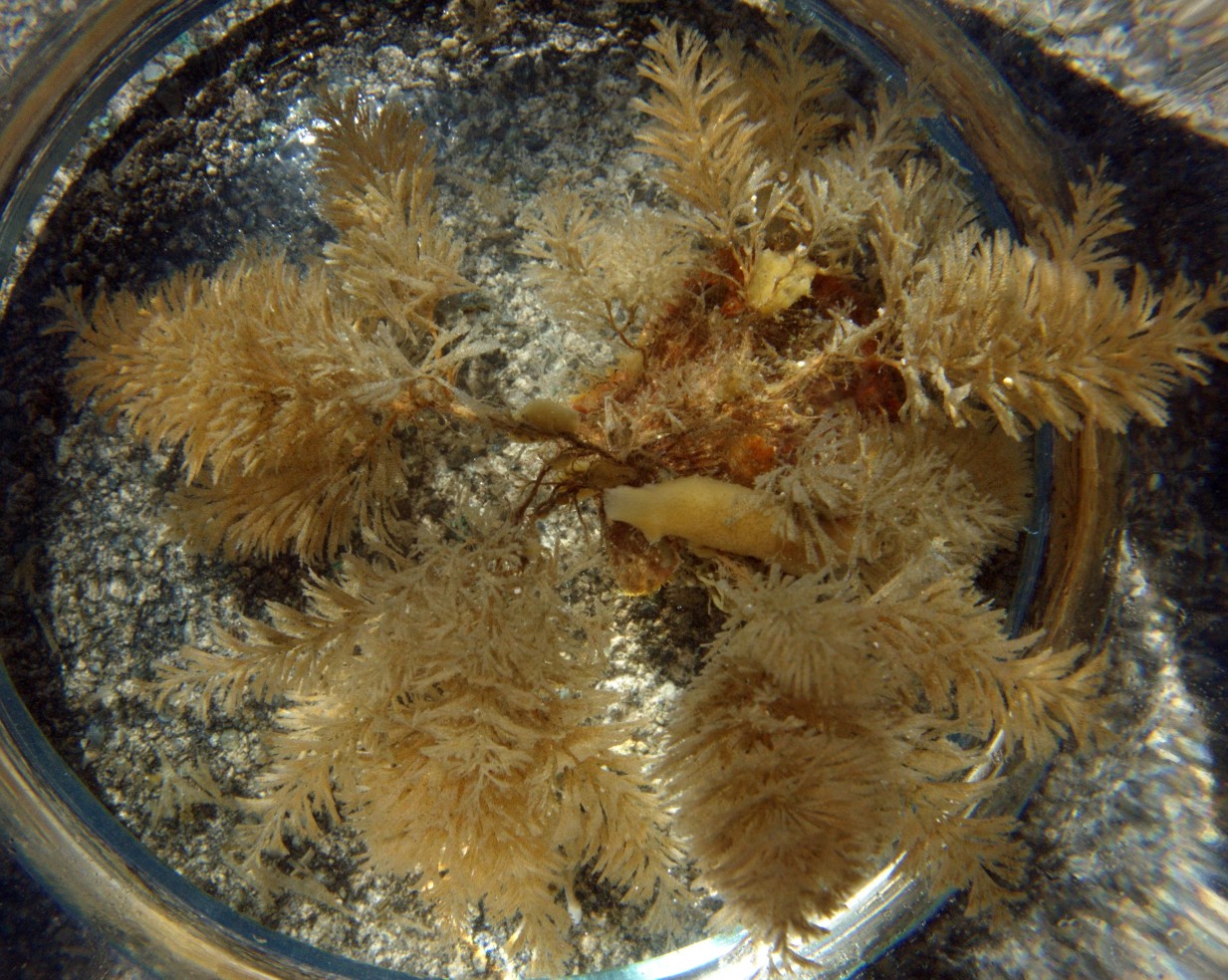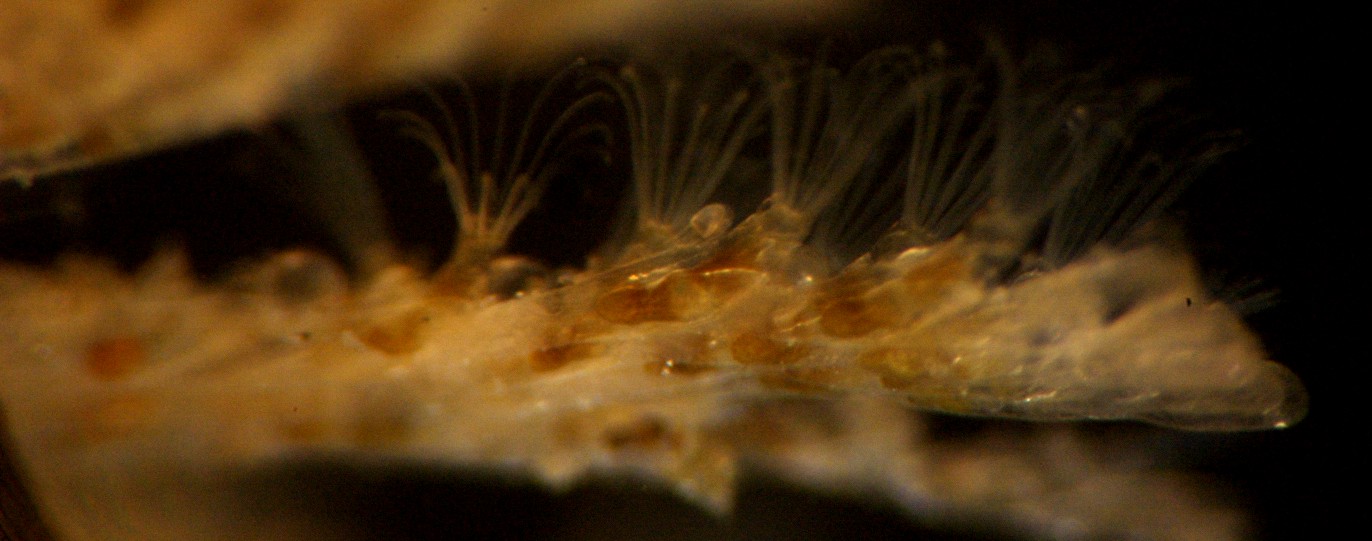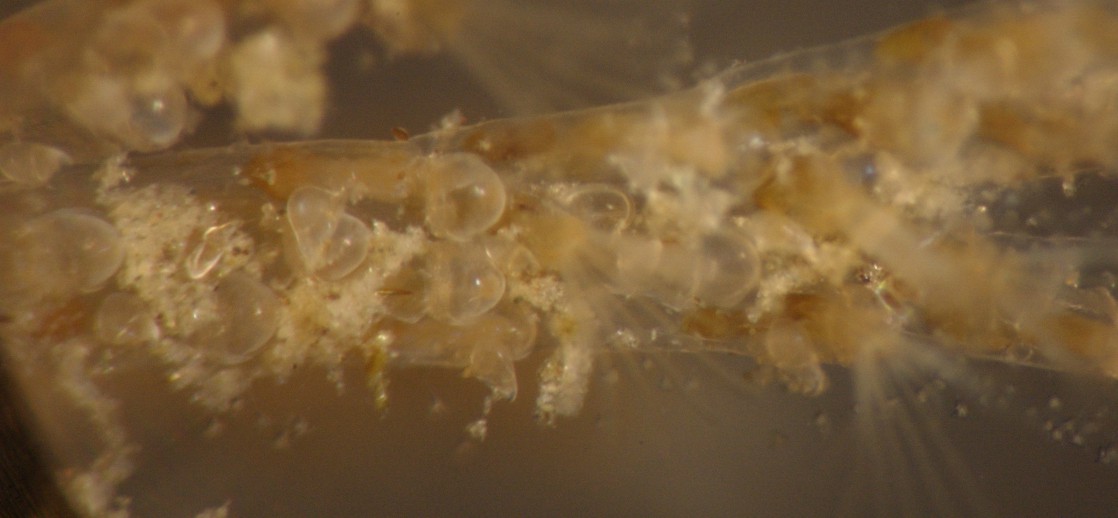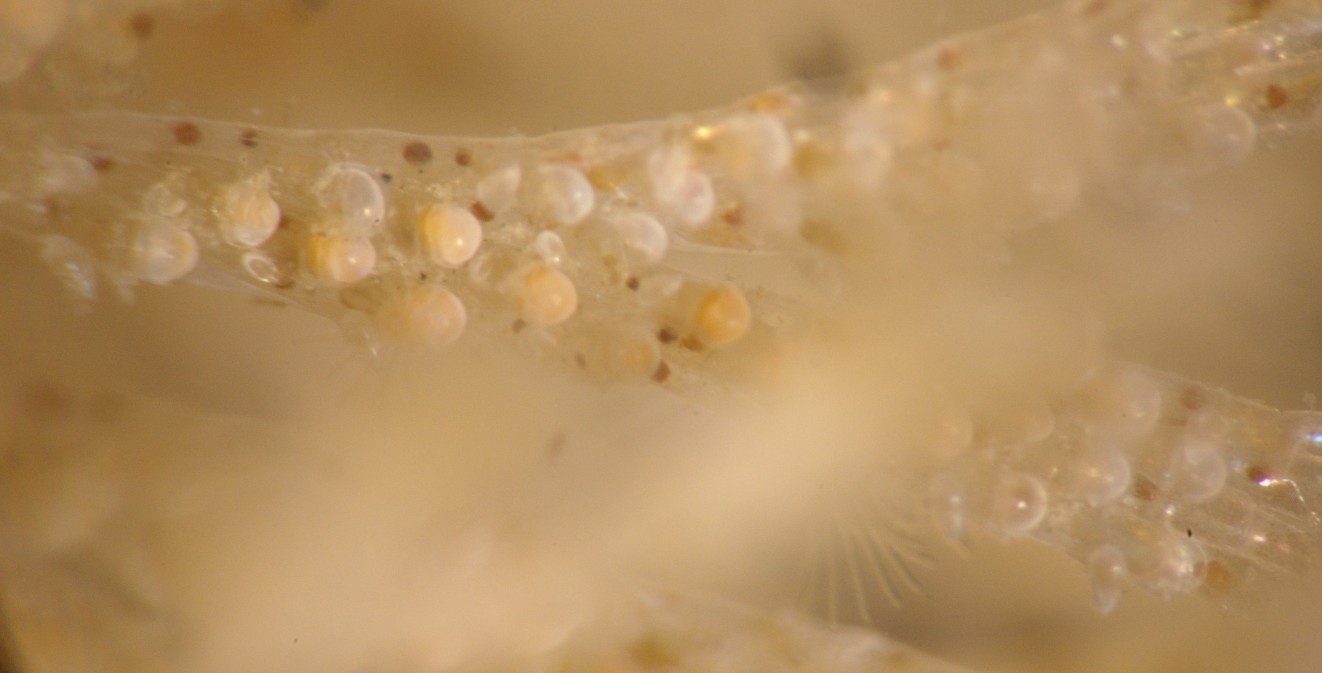Bugula californica Robertson, 1905Common name(s): Spiral bryozoan, stiff stalk bryozoan, California bryozoan, Pacific branching bryozoan |
|
| Synonyms: |  |
|
Class Gymnolaemata
Family Bugulidae
|
|
| Bugula californica colony, about 10 cm across, from floats at Fidalgo Marina. Each whorled branch is about 1-2 cm across. A small sponge is attached near the center of the colony. | |
| (Photo by: Dave Cowles, July 2012) | |
Description: This bryozoan has an erect, flexible bushlike colony with spiraling whorled branches (photo) instead of being encrusting. Although the colony is flexible it is partly stiffened (lightly calcified). The branches are attached directly to the substrate rather than arising from a long stalk. The zooids are in double rows, with more rows near where the colony branches. Each zooid ends with two large, blunt spines. Much of the frontal of the zooecia is not calcified. It has no vibracula nor scutum. Large avicularia which look like birds' heads are present near the center of the zooids (photo) but not on the frontals. The ovicells are globular (photo). Colonies up to 5 cm or more tall, with zooids 0.5 to 0.6 mm tall. Whitish or tan; parts may appear orange during sexual reproduction. Ricketts et al., (1985) says they sometimes have a purplish tinge.
How to Distinguish from Similar Species:Bugula pugeti, B. cucullifera, andB. pacifica do not have branches in spiral whorls.
Geographical Range: British Columbia, Canada to Galapagos Islands, Hawaii. Especially common on the Channel Islands in California.
Depth Range: Subtidal to 400 m depth, most common to 60-70 m.
Habitat: Attach to hard substrates. Common on docks and floats. Members of this genus are important boat fouling organisms.
Biology/Natural History:
The lower
parts of the colony may consist mostly of dead zooids,
which may appear dark brown. The birdhead-like avicularia
keep other organisms from settling on the colony, plus may also capture
small crustaceans which are then passed to the mouth of the zooids.
In Los Angeles harbor reproduction is year-round but in colder waters
reproduction
is concentrated during the warmer months. The larvae may be
pelagic
for only a short time--4-6 hours; then settles as an ancestrula which
divides
repeatedly to form the colony. Predators include the clown
nudibranch Triopha
catalinae. Other nudibranchs such
as Dirona
albolineata and Janolus
fuscus feed on Bugula
species as well so may be predators on this species.
| Return to: | |||
| Main Page | Alphabetic Index | Systematic Index | Glossary |
References:
Dichotomous Keys:Carlton, 2007
Flora and Fairbanks, 1966
Kozloff, 1987, 1996
General References:
Harbo,
1999, 2011
Kozloff
et al., 1993
Lamb
and Hanby, 2005
Morris
et al., 1980
Ricketts
et al., 1985
Scientific Articles:
Wollacott, Robet M. and
Wheeler J. North, 1971. Bryozoans of California and northern
Mexico kelp beds. pp. 455-479 in North, Wheeler J. (ed.), The
Biology of Giant Kelp Beds (Macrocystis)
in California.
Beihefts zur Nova Hedwigia Heft 32. Publisher: J.
Cramer, Lehre, Germany.
Web sites:
General Notes and Observations: Locations, abundances, unusual behaviors:
This closer view of one branch shows the spiral growth
pattern, along
with several open zooids
feeding with their lophophores.
The dark brown dots may be dead zooids.
This closer view shows a number of open zooids
with extended lophophores.
The zooids
seem to
be concentrated on one side of the branches, usually the inside of the
whorl.
This view shows several avicularia,
which are shaped like bird heads. The beaks of the avicularia
pinch anything that settles near them. Several open zooids
can also be seen.
This view has several avicularia,
but the orange individuals might be ovicells
(I am not sure).
Authors and Editors of Page:
Dave Cowles (2012): Created original page
CSS coding for page developed by Jonathan Cowles (2007)
Salish Sea Invertebrates web site provided courtesy of Walla Walla University



